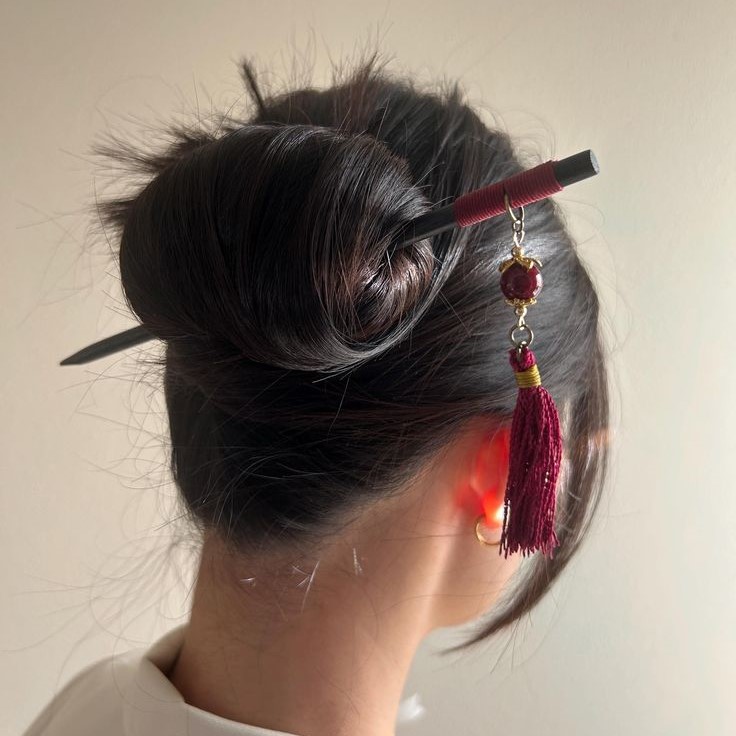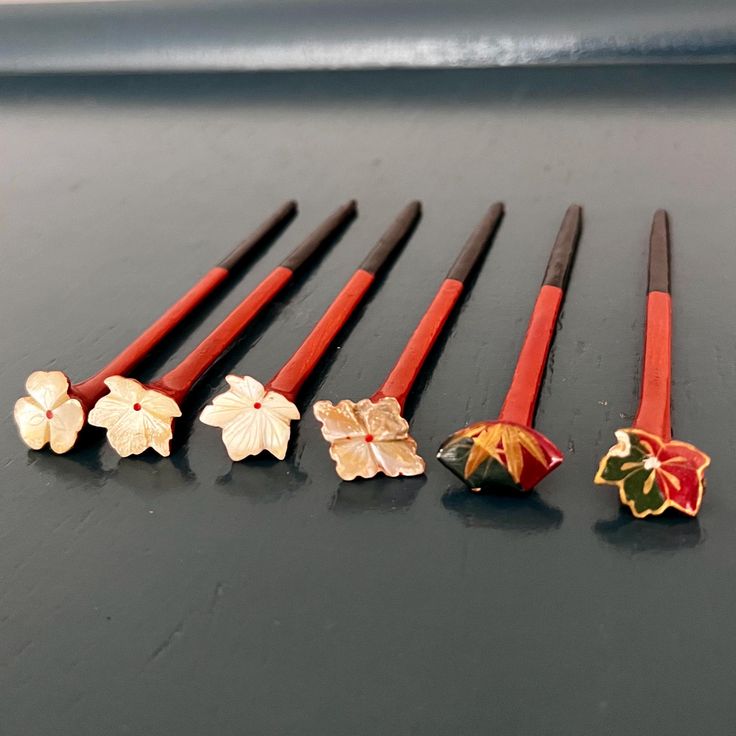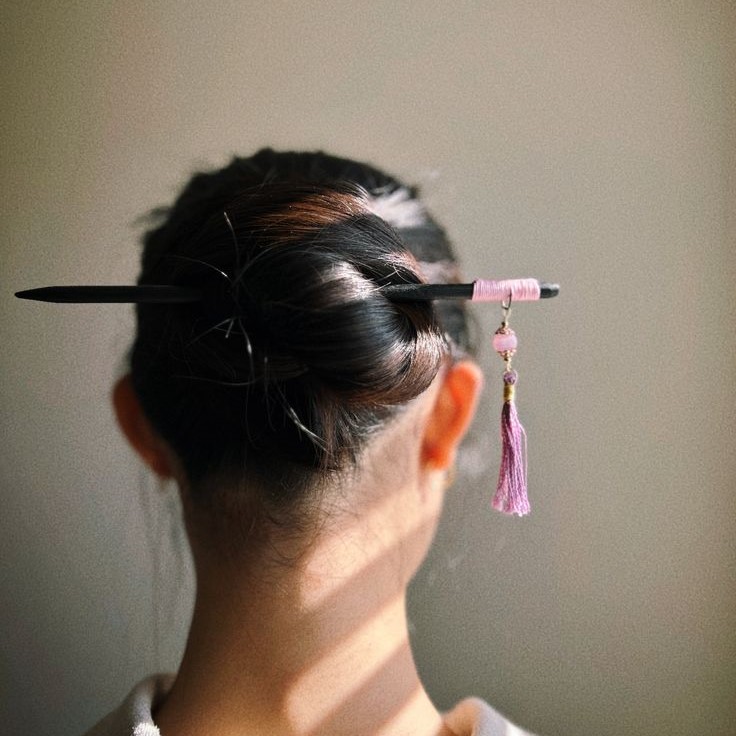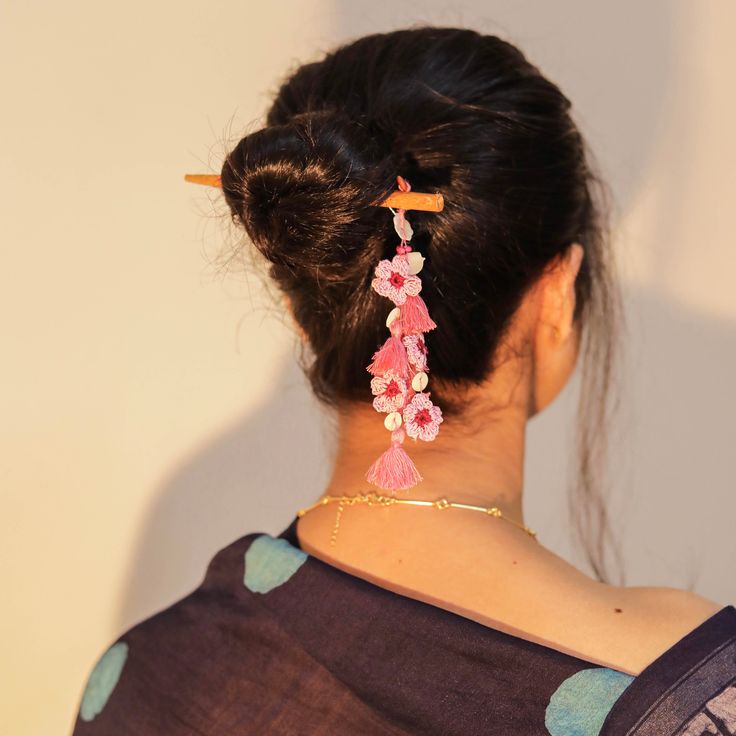Japanese Hair Sticks: A Classic Accessory with Modern Appeal
What Are Japanese Hair Sticks Called?
Japanese hair sticks, also known as “kanzashi,” have been a staple in traditional Japanese hairstyling for centuries. These elegant accessories are crafted from materials such as bamboo, wood, or plastic and serve both functional and decorative purposes. Historically, kanzashi were used to hold intricate hairstyles in place during formal occasions like weddings and tea ceremonies. However, their appeal has transcended cultural boundaries, making them popular among global audiences today. Whether you’re looking to add sophistication to your updo or learn more about their origins, understanding what Japanese hair sticks are called is just the beginning of an enriching journey into hairstyling traditions.

Moreover, these hair accessories come in various designs, including simple bamboo sticks and elaborately carved wooden pins. Each type reflects different eras of Japanese history and craftsmanship. For instance, some feature floral motifs inspired by nature, while others incorporate lacquer finishes that enhance durability. By exploring this question—what are Japanese hair sticks called?—you can appreciate not only their functionality but also their artistic significance.
The History
The evolution of Japanese hair sticks dates back to ancient times when they first appeared as practical tools for managing long hair. Over centuries, these humble sticks transformed into symbols of status, identity, and artistry. During the Edo period (1603–1868), kanzashi reached new heights of popularity, becoming essential components of elaborate hairstyles worn by geisha, maiko, and samurai wives. These hairstyles often required multiple hair sticks to secure layers upon layers of carefully arranged tresses.
Interestingly, the design of Japanese hair sticks evolved alongside societal changes. In earlier periods, simplicity reigned supreme, with plain wooden sticks sufficing for daily use. As time progressed, artisans began incorporating gold leaf, enamel, and silk ribbons to create luxurious pieces suitable for special events. Today, many people still cherish these historical roots, choosing authentic kanzashi over mass-produced alternatives. Understanding the rich backstory of Japanese hair sticks adds depth to their contemporary relevance.
How Do Japanese Hair Sticks Work?
Using Japanese hair sticks may seem daunting at first glance, but mastering the technique opens up endless styling possibilities. Unlike clips or elastics, these sticks rely on friction and tension to stay securely in place. To apply them effectively, start by twisting sections of your hair tightly before inserting the stick horizontally through the twisted portion. This method ensures stability without causing damage to strands.

For those unfamiliar with traditional hairstyling techniques, practice makes perfect. Beginners might find it helpful to experiment with shorter styles until gaining confidence. Additionally, pairing Japanese hair sticks with other accessories like barrettes or scrunchies can provide added support. Ultimately, learning how these sticks function empowers users to embrace creativity while maintaining professionalism in any setting.
Why Choose Japanese Hair Sticks Over Other Accessories?
Compared to conventional hairpins or headbands, Japanese hair sticks offer unique advantages that set them apart. First, their natural material composition minimizes irritation and breakage, promoting healthier hair overall. Second, their minimalist yet striking appearance complements virtually all face shapes and outfit choices. Third, they cater to diverse preferences, whether you prefer understated elegance or bold statement pieces.
Another compelling reason lies in sustainability. Many Japanese hair sticks are made from renewable resources like bamboo or responsibly sourced wood. This eco-conscious approach resonates strongly with environmentally aware consumers seeking stylish yet ethical solutions. Furthermore, owning a pair of high-quality Japanese hair sticks means investing in longevity rather than disposability, reducing waste over time.
Incorporating Hair Sticks Into Modern Fashion
Adaptability Across Occasions
Japanese hair sticks, steeped in tradition, are surprisingly versatile and adaptable to contemporary fashion trends.
They effortlessly bridge the gap between casual settings and formal events, making them a timeless accessory for any occasion.
For example, adding one or two hair sticks to a sleek ponytail introduces an elegant touch of sophistication.
Alternatively, layering multiple sticks into a voluminous bun creates a dramatic and eye-catching look that stands out at special gatherings.
Gender-Neutral Appeal
While traditionally associated with women’s hairstyles, hair sticks have transcended gender boundaries in certain cultural contexts.
Men occasionally incorporate similar styles into their ensembles, showcasing the universal appeal of these accessories.
This inclusivity highlights the versatility of hair sticks, proving they can enhance anyone’s personal style regardless of gender identity.

Innovative Designs by Modern Designers
Contemporary designers frequently reimagine classic patterns using cutting-edge materials such as acrylic or metal.
These reinterpretations cater to younger generations seeking modern aesthetics while maintaining cultural significance.
The fusion of traditional craftsmanship with innovative techniques results in unique pieces that resonate with tech-savvy consumers.
Preservation of Heritage Through Handcrafted Pieces
Purists often prefer handcrafted hair sticks, which carry deep historical and cultural value.
Each handmade piece tells a story, reflecting centuries of artisanal expertise passed down through generations.
By choosing authentic, heritage-infused options, wearers honor the traditions behind these accessories.
Cultural Fusion in Everyday Style
Integrating Japanese hair sticks into daily outfits demonstrates an appreciation for cross-cultural influences.
It encourages global awareness and respect for diverse traditions while keeping pace with evolving fashion trends.
Whether used subtly or boldly, these accessories allow individuals to express creativity while paying homage to rich cultural legacies.
Overall, Japanese hair sticks serve as a perfect blend of tradition and innovation, offering endless possibilities for those looking to elevate their personal style.
Caring for Your Hair Sticks
Proper maintenance extends the lifespan of your cherished Japanese hair sticks. Always store them in dry environments away from direct sunlight to prevent discoloration or warping. If your sticks include delicate embellishments, avoid exposing them to harsh chemicals found in hairsprays or perfumes. Gently wiping them down with a soft cloth after each use helps maintain shine and prevent buildup.
Additionally, consider rotating between different pairs if you own multiple sets. Alternating usage reduces wear-and-tear on individual pieces, ensuring none become overly stressed. Finally, never force a stubbornly lodged stick out of tangled hair; instead, carefully detangle the area beforehand to preserve both your hair and the accessory itself.
Exploring Cultural Significance Beyond Hairstyling
Symbolism in Gender Roles
Japanese hair sticks, or kanzashi, have historically played a significant role in distinguishing between different gender roles within society.
For instance, unmarried women often wore brightly colored kanzashi adorned with floral motifs like cherry blossoms, symbolizing their youthful energy and vitality.
In contrast, married women typically chose more subdued designs that reflected their transition into roles associated with maturity and responsibility.

Age-Related Symbolism
The design and color of kanzashi also varied based on the wearer’s age group, reinforcing societal expectations tied to life stages.
Younger women embraced vibrant and playful patterns to signify their carefree nature, while older women opted for classic and understated styles indicative of wisdom and experience.
This practice underscores how hairstyles and accessories served as visual markers of identity and social standing.
Seasonal Celebrations and Festivals
Kanzashi were intricately linked to seasonal celebrations, enhancing their cultural significance beyond mere hairstyling tools.
During spring festivals, cherry blossom-themed kanzashi became particularly popular among young women, aligning personal adornment with natural cycles and communal joy.
Similarly, autumn-inspired designs featuring maple leaves or chrysanthemums celebrated harvest season and national pride.
Integration into Rituals and Performances
Even today, specific types of kanzashi remain integral to traditional Japanese rituals and performances, such as tea ceremonies, weddings, and kabuki theater.
These occasions highlight the enduring relevance of kanzashi in preserving cultural heritage and honoring time-honored practices.
Wearing appropriate kanzashi during these events demonstrates respect for tradition and an understanding of cultural nuances.
Broader Implications for Human Expression
Studying the cultural significance of kanzashi reveals the profound ways small objects can encapsulate complex ideas about identity, community, and history.
They serve as tangible links to Japan’s rich past, offering insights into the values and aesthetics cherished by previous generations.
By appreciating these connections, we deepen our understanding of human expression and the universal desire to communicate meaning through material culture.
Japanese hair sticks transcend their functional purpose, embodying layers of cultural symbolism that connect individuals to their heritage and broader societal contexts.

Final Thoughts
In conclusion, Japanese hair sticks represent far more than mere adornments—they embody centuries of innovation, beauty, and meaning. From answering fundamental questions like “What are Japanese hair sticks called?” to delving into their multifaceted uses and preservation tips, we’ve explored numerous facets of these remarkable accessories. As interest in global traditions continues growing, so too does the allure of Japanese hair sticks as timeless companions bridging past and present. Embrace their charm, and let them inspire your next creative endeavor.